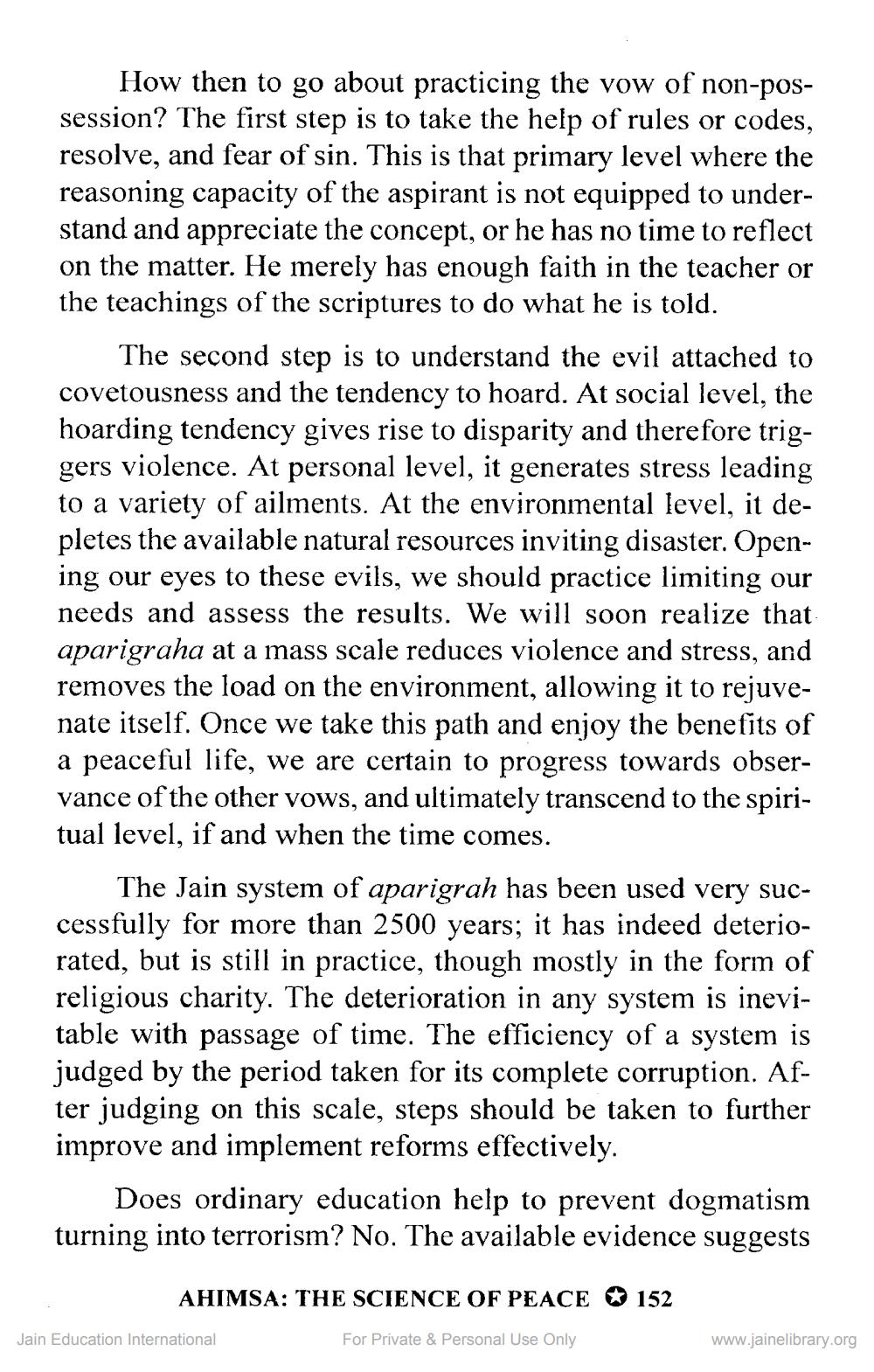________________
How then to go about practicing the vow of non-possession? The first step is to take the help of rules or codes, resolve, and fear of sin. This is that primary level where the reasoning capacity of the aspirant is not equipped to understand and appreciate the concept, or he has no time to reflect on the matter. He merely has enough faith in the teacher or the teachings of the scriptures to do what he is told.
The second step is to understand the evil attached to covetousness and the tendency to hoard. At social level, the hoarding tendency gives rise to disparity and therefore triggers violence. At personal level, it generates stress leading to a variety of ailments. At the environmental level, it depletes the available natural resources inviting disaster. Opening our eyes to these evils, we should practice limiting our needs and assess the results. We will soon realize that aparigraha at a mass scale reduces violence and stress, and removes the load on the environment, allowing it to rejuvenate itself. Once we take this path and enjoy the benefits of a peaceful life, we are certain to progress towards observance of the other vows, and ultimately transcend to the spiritual level, if and when the time comes.
The Jain system of aparigrah has been used very successfully for more than 2500 years; it has indeed deteriorated, but is still in practice, though mostly in the form of religious charity. The deterioration in any system is inevitable with passage of time. The efficiency of a system is judged by the period taken for its complete corruption. After judging on this scale, steps should be taken to further improve and implement reforms effectively.
Does ordinary education help to prevent dogmatism turning into terrorism? No. The available evidence suggests
AHIMSA: THE SCIENCE OF PEACE
152
Jain Education International
For Private & Personal Use Only
www.jainelibrary.org




